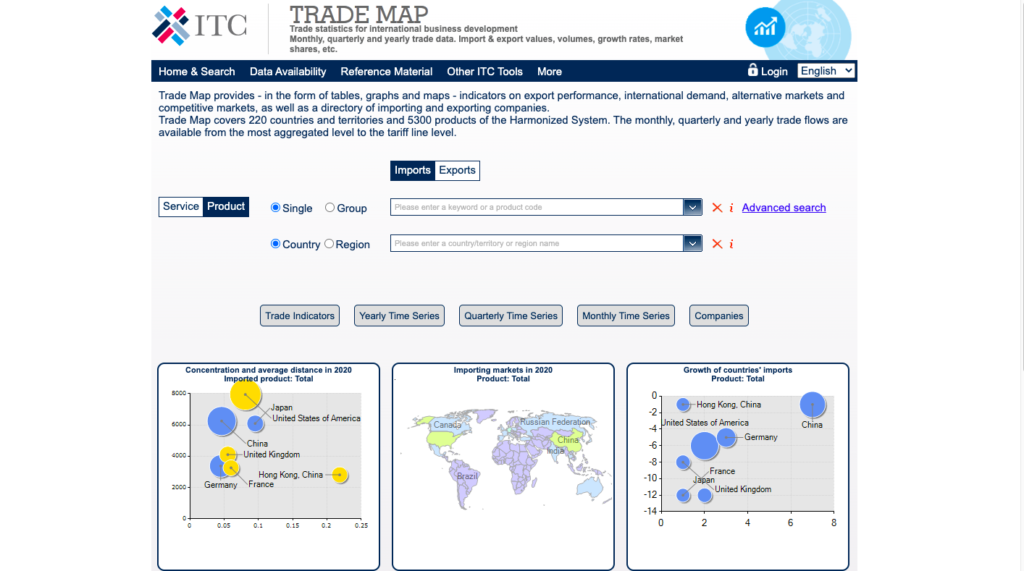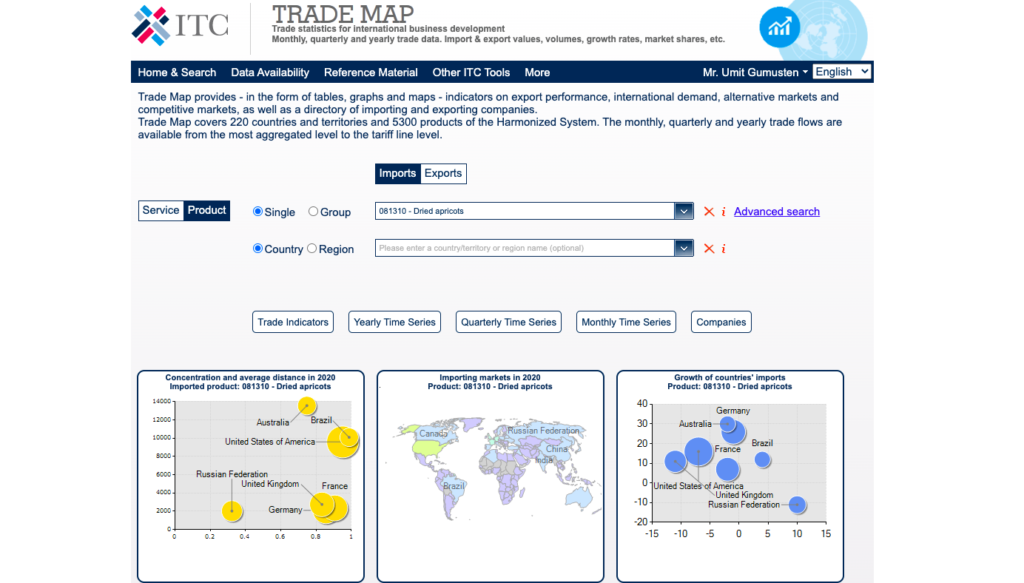The importance of SMEs in international trade is incontrovertible and every government desires their small businesses to become a global company. However, due to several reasons they have difficulty in retaining their presence in the international arena. It’s mostly because they skip developing their long haul internationalization strategy which requires a well conceived target market research and planning. Rather, they tend to just take the plunge and reach their potential customers unaware of the market entry conditions.
Without knowing where to export profitably, which markets are growing and which ones are shrinking, it’s like a boat sailing in the ocean without course; you never know where you’re going. So, the best way to start exporting is making a bulletproof target market research at the outset and identify where and how to enter a given market.
1st Step – Researching Potential Markets – Big Data Analysis
You can start making your research in two ways:
- Using existing data
- Making your own research
Using existing data
There is tons of market research done by governmental bodies, agencies and private companies. These are precious data updated periodically.
Paid Market Research Reports
If you have allocated money from the budget, buying custom research and market reports from data, intelligence and market research companies can save you time and effort. These companies can bring you very insightful information that you may never reach or even if you do, you’d pay way more than they do.
With a quick web search you can find a bunch of companies providing market reports and intelligence services such as GlobalData, the Economist Intelligence Unit, Euromonitor or Mintel.
Your Country’s Services
Many countries have services designated to help businesses to export their products or services overseas. These mainly include:
- Chamber of Commerce
- Exporters’ Associations
- Industry and Trade Associations
- Governmental Export Development Agencies
Make your own research
Search for Free Reports
First thing to do is find resources that are already public and free to read. Using advanced google search, it’s possible to find useful information about your industry. Although they may not be as in depth and comprehensive as paid reports, you can get a general idea.
Don’t be limited to google in your research. There are other search engines which haven’t turned into an SEO race. Always search twice with different keywords.
Prepare your own report
Using ITC tools is a good start to get the overall insights:
Study the statistics to gain big data insights.
Use these valuable sources to do your own research:

Trademap is a powerful tool of ITC that provides indicators on export performance, international demand, alternative markets and competitive markets, as well as a directory of importing and exporting companies. This is one of my favorite websites when doing research.
Take dried apricots for an example. Search for dried apricots in 6 digit HS Code, we see the indicators of yearly, quarterly and monthly export/import as well as a directory of exporting and importing companies.

As you analyze Trademap further, you’ll get an overall idea of your potential target markets, competitor countries and much more valuable data.
Below are the other useful statistics you can compare with Trademap statistics.
- UN Comtrade
- UNECE
- Eurostat Statistics
- Food and Agriculture Organization of the United Nations (if it’s relevant to your industry)
- International Energy Agency
- Organization for Economic Cooperation and Development
- United Nations Statistical Division
- United Nations Industrial Development Organization
- World Trade Organization
When you are done with the research, choose 10 to 20 countries and split them into 4 categories:
- Fast growing
- Small but promising
- Big and steady
- Big but shrinking
2nd Step – Assessing the Potential Markets
After identifying your target markets, the next step is assessing the markets in depth and taking the best fit for you.
To do this, we need to know what kind of answers we are looking for and what criteria we should take into consideration.
What answers are we looking for?
- Is it a profitable market?
- Is it easy to export your products/services?
- Is there a high competition in the market?
- Is the economy stable?
- Is your product/service in demand?
- Is it an importing or re-export country?
- Is the country also producing besides importing? What is the production share?
- What does the end user want? How they prefer using your product in terms of function, packaging, design?
With all the questions above and more, we are trying to learn whether the future of your product/service is promising or not.
What indicators should we look at?
You can use various data and information that caters for finding your target markets. The main headings of targeting criteria are:
- Market size
- Trade indicators
- Tariffs and non-tariff barriers
- Required documents (ease of documentation formalities)
- Political Situation
I prepared a simple analysis and assessment chart you can download and customize it to your business.
Where to find the information about a given market
To finish your solid target market analysis, you can buy tailored reports, work with local agencies or make your own research with the information from periodicals, studies, market reports, surveys and statistical analysis available in various sources like:
- Chambers of commerce,
- Websites providing information about global and country based data
- Trading Economics
- ITA
- ITC Market Analysis Portal
- ITC Rules of Origin Facilitator
- ITC Standards Map
- ITC Trade Competitiveness Map
- ITC Procurement Map
- ITC Export Potential Map
- ITC Market Price Information
- WTO Regional Trade Agreements Database
- The World Bank Global Preferential Trade Agreements Database
- Economic development organizations,
- International Organizations
- Trade development organizations
- Industry and trade associations,
- Government sources,
- Foreign embassies and consulates in your country
- Paid reports
- An agency based in your target market
- Visiting the potential market
When you’re done with all the research and analysis, choose your top 5 to 10 target markets. It’s ideal to split them into 2 as “steady big” and “growing small” and craft your market entry strategy accordingly.
You can’t come up with one strategy for all your target markets. There should be differences in terms of product function, marketing, pricing, export modes etc.
If you want to contribute to this article with your knowledge, leave a comment below.












